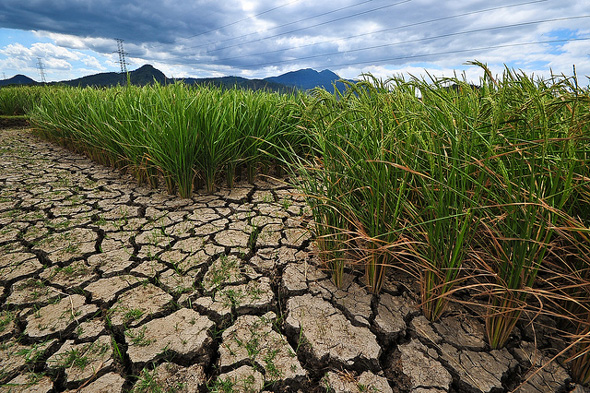The Frightening Affect of Climate Change on Noodlemagazin3

Introduction
Welcome to Noodlemagazin3, where we bring you the latest news and insights on a variety of topics. Today’s topic is one that affects us all: climate change. We’ve all heard about it, but do we really understand the frightening impact it has on our world? From melting polar ice caps to extreme weather conditions, climate change is causing havoc in ways that are hard to ignore. In this blog post, we’ll dive deep into the scary effects of climate change and explore what we can do to reduce its impact. So grab a cup of coffee and let’s get started!
What is Climate Change?
Climate change is a term used to describe the long-term changes in temperature, precipitation patterns, and weather events of our planet. It is caused by an increase in greenhouse gases such as carbon dioxide which traps heat within the Earth’s atmosphere. This causes global temperatures to rise over time leading to significant environmental impacts.
The main cause of climate change is human activities such as burning fossil fuels for transportation and electricity production. These activities generate large amounts of greenhouse gas emissions into our atmosphere causing global warming.
One major concern with climate change is that it leads to many negative consequences that can harm both people and wildlife. Some examples include more frequent extreme weather events like hurricanes, droughts, floods, and wildfires.
Understanding climate change requires acknowledging its potential effects on food security, water availability, public health issues like respiratory diseases due to air pollution or contagious illnesses due to mosquitos’ migration patterns.
Therefore we must take action now before it’s too late!
The Greenhouse Effect
The Greenhouse Effect is a natural process that helps to regulate the Earth’s temperature. This process occurs when certain gases in the atmosphere trap heat from the sun, which warms up the planet. However, human activities like burning fossil fuels and deforestation have increased the concentration of these greenhouse gases, leading to an enhanced Greenhouse Effect.
Carbon dioxide (CO2) is one of the primary greenhouse gases responsible for this effect. The combustion of oil, gas, and coal produces CO2 emissions that contribute heavily to climate change. Other harmful pollutants such as methane (CH4), nitrous oxide (N2O), and chlorofluorocarbons (CFCs) also play a significant role in accelerating global warming.
As more heat gets trapped within our atmosphere due to these increasing concentrations of greenhouse gases, it leads to higher temperatures worldwide. This rise in temperature has been causing numerous environmental problems like melting polar ice caps, rising sea levels and extreme weather conditions.
Understanding how human activity contributes to enhancing the Greenhouse Effect on our planet will help us make informed decisions about how we can reduce its effects on climate change.
Melting Polar Ice Caps
Melting Polar Ice Caps
The melting of polar ice caps is one of the most visible and alarming effects of climate change. The Arctic sea ice has been shrinking at an alarming rate, with a decline of 12.85 percent per decade since satellite observations began in 1979.
The primary cause for this rapid melt is the increase in temperature caused by greenhouse gas emissions from human activities like burning fossil fuels. As temperatures rise, more ice melts, which further contributes to global warming through the feedback loop.
One significant impact of melting polar ice caps is on marine life that depends on sea ice for survival. For example, polar bears depend on sea ice as a hunting platform to catch their prey; without it, they struggle to get enough food and face extinction.
Another consequence is rising sea levels due to increased water runoff from glaciers and land-based ice sheets into oceans. This can lead to coastal flooding and erosion that threaten human settlements globally.
We must act immediately and significantly reduce our carbon footprint if we want to prevent irreversible damage from occurring due to the continued melting of polar ice caps caused by climate change.
Rising Sea Levels
Rising sea levels are a direct consequence of climate change and global warming. As the Earth’s temperature increases, polar ice caps start melting, leading to a rise in sea levels. The rising water level is a serious threat to coastal cities and islands around the world.
One of the most significant impacts of rising sea levels is an increased risk of flooding. Low-lying areas and small islands are at high risk of being submerged by seawater during high tide or severe weather conditions such as hurricanes and typhoons.
The damage caused by flooding can be catastrophic for communities living near coastlines. Homes, businesses, infrastructure, and even entire ecosystems can be destroyed or severely affected by floodwaters.
In addition to flooding, rising sea levels also contribute to erosion along coastlines. Waves become more powerful with higher water volumes pushing sand off beaches into deeper waters that further aggravate the problem.
Moreover, saltwater intrusion due to rising seas could contaminate drinking water supplies for millions of people who live in coastal regions worldwide which may lead to conflicts over resources in future times.
It is clear that rising sea levels pose significant threats not only environmentally but socially as well leading us towards thinking about ways we can curb carbon emissions significantly while still maintaining our lifestyles successfully on this planet!
Extreme Weather Conditions
Extreme weather conditions are becoming more frequent due to climate change. Heatwaves, droughts, hurricanes, and tornadoes have been increasing in intensity and frequency over the past few decades. These extreme weather events can cause severe damage to infrastructure, property, wildlife habitats, and human health.
Heatwaves are one of the most common types of extreme weather conditions caused by climate change. They lead to dehydration among people who don’t get enough water or rest under shade. Children and elderly people are particularly susceptible to heatstroke during long periods of hot temperatures.
Droughts occur when an area experiences a lack of rainfall for an extended period leading to crop failure which affects food prices in local markets. In some parts of the world where agriculture is dependent on seasonal rains like Africa’s Sahel region countries such as Sudan experience famine that leads to death
Hurricanes happen when warm ocean waters fuel strong wind speeds that form around low-pressure systems off coastlines causing floods inland from storm surges with high waves crashing into coastal areas while also bringing landslides near mountainside locations.
Tornadoes occur when two air masses collide at different temperature levels resulting in funnel-shaped clouds descending towards landmasses destroying homes & structures along their paths leaving a trail of destruction behind them.
Extreme weather conditions pose significant risks not only in terms of financial loss but also humanitarian impacts affecting millions worldwide; we must prioritize addressing climate change as it remains an urgent global issue requiring prompt action by all stakeholders across private-public sectors alike if we want future generations living healthy lives free from natural disasters’ devastating effects.
Droughts and Floods
Droughts and floods are some of the most common consequences of climate change. As temperatures continue to rise, regions that were once able to support agriculture may experience prolonged dry spells leading to droughts. During a drought, crops fail, water sources dry up, and people become more vulnerable to disease due to lack of clean water.
On the other hand, when it rains heavily in areas that aren’t used to such rainfall patterns, flash floods can occur. Homes and businesses can be destroyed while communities struggle with loss of life as well as property damage.
The frequency and intensity of these extreme weather events have increased dramatically over the past few decades and they’re projected to get worse if we don’t take steps towards reducing our carbon footprint.
It’s important for us all to understand how much impact our daily lives have on the environment around us. Simple actions like turning off lights or carpooling can go a long way in helping reduce greenhouse gas emissions which contribute significantly towards climate change.
Displacement of Wildlife
The frightening effects of climate change are not only limited to humans, but also wildlife. As temperatures continue to rise and habitats become altered, many species are being forced to migrate or face extinction.
Birds that once migrated south for the winter are now staying put in their northern breeding grounds due to warmer temperatures. This disrupts ecosystems as these birds play a vital role in seed dispersal and insect control.
Marine life is also affected by changing ocean temperatures and acidity levels. Coral reefs, home to countless aquatic species, are dying off at an alarming rate due to bleaching caused by warming waters.
Land animals are facing similar challenges as they struggle with finding food and water in regions experiencing droughts or floods. Many larger mammals such as polar bears and elephants have seen drastic declines in populations due to loss of habitat.
It’s important for us all to recognize the impact we have on our planet’s wildlife through our actions towards reducing climate change.
Human Health Impacts
Climate change is not just an environmental issue but also a serious public health concern. The changing climate has significant impacts on human health around the world. One of the most concerning issues related to global warming is its impact on air quality, which can lead to respiratory problems such as asthma and allergies.
Rising temperatures are also responsible for the increase in heat waves, which can cause dehydration, heat exhaustion, and even death in extreme cases. Moreover, changes in precipitation patterns have led to severe flooding that can result in waterborne diseases like cholera and diarrhea.
Another major area of concern when it comes to human health impacts of climate change is food security. Changes in weather patterns are causing crop failures resulting from floods or droughts; this will eventually lead to malnutrition among vulnerable groups who depend on subsistence farming.
In addition, melting glaciers due to rising temperatures lead to the release of toxic chemicals into water sources used by humans for drinking purposes; this results in various types of cancers over time.
As we continue to witness how climate change affects our daily lives, it’s important that we take immediate action towards mitigating these adverse effects by reducing our carbon footprint through lifestyle changes such as using alternative modes of transportations or eating less meat while embracing plant-based diets amongst others.
Solution: Reducing Our Carbon Footprint
It is clear that climate change has numerous frightening effects on our planet, from melting ice caps and rising sea levels to displacement of wildlife and human health impacts. However, it’s not too late to take action.
Reducing our carbon footprint can be achieved through a variety of methods such as using renewable energy sources, investing in public transportation or carpooling, reducing meat consumption, and even something as simple as turning off lights when leaving a room. These small actions can make a big difference in the fight against climate change.
In addition to individual efforts, governments and corporations must also play their part in reducing carbon emissions. Implementing policies that encourage sustainability practices and transitioning towards clean energy sources are crucial actions that need to be taken on a larger scale.
We all have a role to play in addressing climate change. Let us take action today so future generations don’t have to face the frightening consequences we’re currently seeing.



